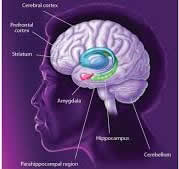|
|
Welcome to The Visible Embryo, a comprehensive educational resource on human development from conception to birth.
The Visible Embryo provides visual references for changes in fetal development throughout pregnancy and can be navigated via fetal development or maternal changes.
The National Institutes of Child Health and Human Development awarded Phase I and Phase II Small Business Innovative Research Grants to develop The Visible Embryo. Initally designed to evaluate the internet as a teaching tool for first year medical students, The Visible Embryo is linked to over 600 educational institutions and is viewed by more than one million visitors each month.
Today, The Visible Embryo is linked to over 600 educational institutions and is viewed by more than 1 million visitors each month. The field of early embryology has grown to include the identification of the stem cell as not only critical to organogenesis in the embryo, but equally critical to organ function and repair in the adult human. The identification and understanding of genetic malfunction, inflammatory responses, and the progression in chronic disease, begins with a grounding in primary cellular and systemic functions manifested in the study of the early embryo.

The World Health Organization (WHO) has created a new Web site to help researchers, doctors and patients obtain reliable information on high-quality clinical trials. Now you can go to one website and search all registers to identify clinical trial research underway around the world!

|
|
| Disclaimer: The Visible Embryo web site is provided for your general information only. The information contained on this site should not be treated as a substitute for medical, legal or other professional advice. Neither is The Visible Embryo responsible or liable for the contents of any websites of third parties which are listed on this site. |
|
|

Content protected under a Creative Commons License. Commons License. |
|
| No dirivative works may be made or used for commercial purposes. |
|
|
| |
|
|
 
CLICK ON weeks 0 - 40 and follow along every 2 weeks of fetal development
|
|
|
|
Sleep as reward boosts learning
A new study suggests that receiving rewards as you learn can help cement new facts and skills to memory — but especially when combined with a daytime nap.
The findings from the University of Geneva reveal that memories associated with a reward are preferentially reinforced by sleep. Even a short nap after a period of learning is beneficial.
The work is published in the journal eLife.
"Rewards may act as a kind of tag, sealing information in the brain during learning. During sleep, that information is consolidated over information associated with a low reward and is transferred to areas of the brain associated with long-term memory."
"Our findings are relevant for understanding the devastating effects that lack of sleep can have on achievement."
Kinga Igloi PhD, the University of Geneva, and lead researcher
Thirty-one healthy volunteers were randomly assigned to either a 'sleep' or 'wake' group. Both groups' were assessed as equally sensitive to rewards. Participants' brains were then scanned as they were trained to remember picture pairs. Eight series of pictures were shown to each group, who were encouraged to remember at least four pairs in order to get a high reward.
Following a 90-minute break for both 'sleep' and 'rest' groups, each was tested on their memory for picture pairs, then asked to rate their confidence of their answer. Three months later, participants were given a surprise test of exactly the same nature. Both groups' performed better on the highly rewarded identification of picture pairs, but the sleep group performed best overall.
During the surprise test given three months later, volunteers who had slept after memorizing picture pairs did better. These volunteers were also more confident of achieving correct answers during tests.
MRI scans revealed the 'sleep' group experienced greater activity in their hippocampus, a small area of the brain critical to memory formation, which correlated to higher bursts of brain activity called 'slow spindles.'
After three months, the group showed increased connectivity between their hippocampus, medial prefrontal cortex and striatum, areas implicated in memory consolidation and reward processing. |
 |
|
|
"We already knew that sleep helps strengthens memories. Now we know it also helps select and retain memories having deep reward value. It makes adaptive sense that memory consolidation prioritises information critical to survival success."
Kinga Igloi PhD
Abstract
Sleep plays a crucial role in the consolidation of newly acquired memories. Yet, how our brain selects the noteworthy information that will be consolidated during sleep remains largely unknown. Here we show that post-learning sleep favors the selectivity of long-term consolidation: when tested three months after initial encoding, the most important (i.e., rewarded, strongly encoded) memories are better retained, and also remembered with higher subjective confidence. Our brain imaging data reveals that the functional interplay between dopaminergic reward regions, the prefrontal cortex and the hippocampus contributes to the integration of rewarded associative memories. We further show that sleep spindles strengthen memory representations based on reward values, suggesting a privileged replay of information yielding positive outcomes. These findings demonstrate that post-learning sleep determines the neural fate of motivationally-relevant memories and promotes a value-based stratification of long-term memory stores. - See more at: http://elifesciences.org/content/early/2015/10/16/eLife.07903#sthash.BafCml2O.dpuf
Return to top of page
|
|
|
Oct 20, 2015 Fetal Timeline Maternal Timeline News News Archive

Family on commuter train.
Image Credit: You Tube
|
|
| |
|




